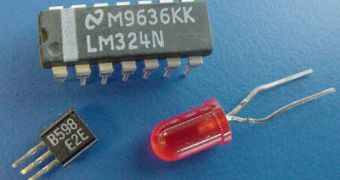The term solid-state device is mostly associated with electronic components. Almost all the electronic equipments we use today are composed of solid-state electronic devices. The word 'solid' refers to the fact that inside the electronic component there is no mechanical action taking place. The expression originated somewhere in the late 1950s, during the transition period from vacuum tube technology to semiconductor diodes and transistors. Today, the solid-state term extends to integrated circuits, light-emitting diodes and even liquid crystal displays.
In 1947, researchers from the Bell Lab invented the first transistor, however it only became commercially available somewhere in the 1960s. Vacuum tubes were still being used in most of the signal amplifying equipments, such as radio transmitters and audio relying devices. However, the transistor was not the first true solid-state device, the diode was. People started experimenting with simple solid-state diodes in 1906, when Whittier Pickard realized that he could construct a silicon crystal radio detector, by placing a fine pointed metal wire on its surface, widely known as a 'cat's whisker'.
Later studies into the phenomena resulted in the construction of the first crystal radio, which is a simple radio receiver with no power source, capable of demodulating frequencies from the carrier wave. In vacuum tubes, the electrical current flows in the form of free electron particles through a vacuumed medium, and is being switched by deflecting the electron beam with the help of focused electrical fields. Such devices usually require high power to heat the electron emitter element, and to generate a powerful electric field.
On the other hand, solid-state devices manipulate electrical currents by controlling the flow of electrons and holes through a mass of semiconductor material. This revolutionary new way of controlling the flow of currents enabled the development of ever smaller, more energy efficient and faster electrical devices that determined what we now call the digital age.

 14 DAY TRIAL //
14 DAY TRIAL //